Pomegranate Editions, Granada, Spain

.
Here’s a Selection of My Work
He aquí una selección de mi trabajo
“Where can I see a selection of your work?” Right here! I’ve gone into the files and pulled out a representative sample of my work over the years. I’ve done it by categories: acid etchings, solarplate prints, linocuts, oil paintings, etc. All of the paintings are for sale and most of the editions still have prints available, so if you see anything you think you might like to purchase, just drop me an email (maureenluciabooth@gmail.com) and we can discuss it. (Click on the images to enlarge them and open up a slide show.) Here we go:
.
Recent Work / Obra Reciente
Solarplate Prints / Estampas Solares
.
Liquid Metal Prints / Estampas de Metal Líquido
.
Acid Etchings / Grabados al Ácido
.
Screen Prints / Serigrafías
.
Linocuts / Linograbados
.
Oil Paintings / Óleos
.
Watercolors / Acuarelas
.
Alhambra Prints / Estampas con tema Alhambra
These are the first prints from my new series on Granada’s Alhambra palace and fortress. Though it’s located barely five miles down the hill from our house, I’ve avoided the Alhambra as a subject for years because of the danger of doing something trite. It’s been done to deathby artists from around the world over the past 200 years. But I’m encouraged by my experiments with liquid-metal techniques, which have obliged me to work fast and loose, and I’m quite pleased with the results.
One surprise in this experience is that the ghost prints turned out more interesting than the first prints pulled off the plates, as you can see in these pictures. Also, learning to print plates with relief on them has been a challenge.
So, please take a look at these new prints and let me know what you think. Or, if you like, come to my studio in Granada and we’ll work on something together!
Interview with Maureen Booth
Maureen Booth is the master printmaker who has published what some fine-art-printmaking insiders consider to be the finest printmaking tutorials on the Web.
“As for doing things differently, making videos is like making prints. The process is essentially the same. You just try to do it better every time.”
.See My New Printmaking Master Classes Videos
 I’m proud to announce that my Printmaking Master Classes videos are now online and ready to download. We’re launching with five videos and there are more coming. Every time we start planning a new one we get ideas for two more. I’ve worked in my studio with a lot of artists from different parts of the world and have a pretty clear idea of what they need both in technical and motivational terms, and I have tried to address these needs in my videos.
I’m proud to announce that my Printmaking Master Classes videos are now online and ready to download. We’re launching with five videos and there are more coming. Every time we start planning a new one we get ideas for two more. I’ve worked in my studio with a lot of artists from different parts of the world and have a pretty clear idea of what they need both in technical and motivational terms, and I have tried to address these needs in my videos.
So, here you have access to five brief previews. Please have a look and see if you think I’ve succeeded.
She Had Never Been to Spain Before, But Granada Was Like Coming Home
 A lot of printmakers will identify with Isabel Mitchell. She graduated with a degree in fine arts, then got married, had a family, and finally went back to school and got herself a “sensible degree.” Then she worked in business for a couple of decades, always yearning to get back to art. It was in this frame of mind that she stepped on a plane in Toronto just over a couple of weeks ago, and stepped off it in Spain’s Málaga airport, rented a car (and a GPS) and drove up to Maureen’s studio in Granada. She was to stay in the Gallinero residence for two weeks of saturation printmaking.
A lot of printmakers will identify with Isabel Mitchell. She graduated with a degree in fine arts, then got married, had a family, and finally went back to school and got herself a “sensible degree.” Then she worked in business for a couple of decades, always yearning to get back to art. It was in this frame of mind that she stepped on a plane in Toronto just over a couple of weeks ago, and stepped off it in Spain’s Málaga airport, rented a car (and a GPS) and drove up to Maureen’s studio in Granada. She was to stay in the Gallinero residence for two weeks of saturation printmaking.
Isabel and Maureen decided that she would make the fastest progress working with solar-plate techniques and they weren’t mistaken. “Isabel took to the work like a duck returning to the water after a long dry spell,” says Maureen. “I don’t think I’ve met anybody so fulfilled by making prints, nor so appreciative.”
Why did Isabel feel so at home in Granada? Because she was born and raised to the age of ten in Argentina, and still speaks Spanish. So of course she felt at home. So much so that she’s thinking hard about coming back next year!
Come Burning Plates and Making Prints Under the Spanish Sun
(A news release which came out backwards)
 My husband, Mike, is an Internet true believer. In 1999, when he suggested making me a website, my reply was: “What for? I’m a printmaker.” How little I knew. The other day he, who will sieze any pretext to make another website, says, “Let’s make a new site for your printmaking workshops,” I said, “Fine, why not? I’ve only got six already.”
My husband, Mike, is an Internet true believer. In 1999, when he suggested making me a website, my reply was: “What for? I’m a printmaker.” How little I knew. The other day he, who will sieze any pretext to make another website, says, “Let’s make a new site for your printmaking workshops,” I said, “Fine, why not? I’ve only got six already.”
This business of creating a lot of mini-sites around your main one and interlinking them is what he calls “an Internet strategy.” It works for me and I’m putting it down here for other artists, in case it might work for you, too. If you’re a working artist like me, you need all the help you can get. What’s more, you can do it all yourself. All you need are a digital camera, a passing acquaintance with the World Wide Web, and a willingness to learn. If you use one of the popular blog platforms (WordPress, Blog Spot…) for publishing your new sites on the Web it’s as easy as selecting a template and following some menu choices. Even the domains and hosting are free on the blogs.
 What’s so special about my printmaking workshops here in Granada, Spain? To begin with, just that: They’re in Granada, Spain. Like Venice, Salzburg or Paris, it’s a place that everybody must visit at least once in their lifetime. The main attraction here is the Alhambra, the lovingly-restored 13th-century Moorish fortress and palace, one of the most beautiful and evocative buildings in the world. Step inside and you’re swept back 900 years to the Asiatic luxury of the Nasrid Dynasty (after its founder, Muhammed I ibn Nasr) and the ongoing border battles between Christians and Muslims for the control of Iberia, a struggle which left the provinces of Granada and neighboring Jaén liberally dotted with castles and watchtowers, more than in any other part of Spain.
What’s so special about my printmaking workshops here in Granada, Spain? To begin with, just that: They’re in Granada, Spain. Like Venice, Salzburg or Paris, it’s a place that everybody must visit at least once in their lifetime. The main attraction here is the Alhambra, the lovingly-restored 13th-century Moorish fortress and palace, one of the most beautiful and evocative buildings in the world. Step inside and you’re swept back 900 years to the Asiatic luxury of the Nasrid Dynasty (after its founder, Muhammed I ibn Nasr) and the ongoing border battles between Christians and Muslims for the control of Iberia, a struggle which left the provinces of Granada and neighboring Jaén liberally dotted with castles and watchtowers, more than in any other part of Spain.
We love Granada for strolling and people watching, especially on summer nights when both visitors and natives are out on the streets enjoying the cool night air till the wee hours of the morning. During that time they migrate from summer terrace to sidewalk cafe, from Italian ice-cream shop to Arab schwarma stands, with special emphasis on the tapas bars. Granada is one of the few Spanish cities where the bars still serve free tapas—a thousand varieties of hot or cold tasty tidbits—along with your drink. The Spanish even have a verb for this highly-civilized practice: “tapear.” Nor does winter slow this delightful tapas custom; it just moves indoors.
 Granada is the capital of the province of the same name and its delights extend into the hinterlands. Sometimes I think of it as a pocket-sized California where the landscapes range from deserts and sub-tropical seashores to the 11,000-foot mountains which were named “Sierra Nevada” long before the Spanish discovered California. So this one province offers fascinating villages and towns, all sea sports, umpteen golf courses, public sports centers and tennis courts, hot-water spas, ski slopes with 4,000 feet of vertical drop, and spectacular mountain biking for all tastes and abilities.
Granada is the capital of the province of the same name and its delights extend into the hinterlands. Sometimes I think of it as a pocket-sized California where the landscapes range from deserts and sub-tropical seashores to the 11,000-foot mountains which were named “Sierra Nevada” long before the Spanish discovered California. So this one province offers fascinating villages and towns, all sea sports, umpteen golf courses, public sports centers and tennis courts, hot-water spas, ski slopes with 4,000 feet of vertical drop, and spectacular mountain biking for all tastes and abilities.
We also go for the tamer, low-mountain activities: picnics alongside babbling brooks, wild mushroom hunting in spring and fall, as well as hiking and collecting big, black garbage bagfuls of pine cones for lighting fires in the winter. Once, lying flat on our backs on the pine needles after eating a big paella with friends, we had to rush to put our toy terriers in the car because there was a pair of golden eagles circling directly overhead.
 Another of our favorite excursions is to the Mediterranean seashore, just a 45-minute drive from Granada via a smashing new divided highway. That makes it possible to skip down there for a seafood lunch, a quick swim or a visit to the fishing port. In summertime, when the beach is full of tourists we like to leave here at 8:00 a.m., get there by quarter to nine, do an hour’s walk and swim, then have breakfast at the golf-club beach bar. (No golfers; they’re all out on the links.) By eleven we’re practically alone on our side of the road zooming back up the hill to Granada, while the beach-bound cars at that hour are lined up bumper to bumper for kilometers.
Another of our favorite excursions is to the Mediterranean seashore, just a 45-minute drive from Granada via a smashing new divided highway. That makes it possible to skip down there for a seafood lunch, a quick swim or a visit to the fishing port. In summertime, when the beach is full of tourists we like to leave here at 8:00 a.m., get there by quarter to nine, do an hour’s walk and swim, then have breakfast at the golf-club beach bar. (No golfers; they’re all out on the links.) By eleven we’re practically alone on our side of the road zooming back up the hill to Granada, while the beach-bound cars at that hour are lined up bumper to bumper for kilometers.
Granadinos take special pride in their year-round cultural programs, first and foremost their Festival of Music and Dance every year in June and July in the “marco incomparable” of the Alhambra. Then there are theater, jazz and tango festivals, and innumerable fiesta days for which the city is decorated and lit up, and animated with parades, music recitals, puppet shows, street theater and other activities. The most important fiestas for Granadinos are Holy Week (Semana Santa) in late March or early April and the Corpus Cristi celebration in June. The Cruces de Mayo are also very popular. The former are more solemn and pompous, while the latter, with the streets festooned with floral crosses, has a distinctly pagan rites-of-spring air about it.
The objective of this news release was to introduce you to Printmaking Courses in Spain.com, the new website for my printmaking workshops, but I’ve strayed off course a bit. I’m out of space here, so why don’t you just take a look at the site and see for yourself: http://printmakingcoursesinspain.com. Meanwhile, don’t forget I’m looking forward to seeing you in Granada!
Maureen Booth Chosen to Participate in The New York Society of Etchers 10th Anniversary Exhibition of Intaglio Prints at The National Arts Club, November 7-19,2010
 This delightful opportunity came up through one of the New York Society of Etchers‘ board members who visited Pomegranate Editions here in Granada in 2009. Being selected for this prestigious show in such an elegant venue came as a complete surprise to me and I’d like to thank Stephen Fredericks and the rest of the NSE board for the honor.
This delightful opportunity came up through one of the New York Society of Etchers‘ board members who visited Pomegranate Editions here in Granada in 2009. Being selected for this prestigious show in such an elegant venue came as a complete surprise to me and I’d like to thank Stephen Fredericks and the rest of the NSE board for the honor.
The print I submitted, “Voladores,” is a mixed-media work, a combination of etching and liquid metal additives. This is it:
El Gallinero Receives First Artists in Springtime 2010
It’s been a busy month and a half in my studio, working with artists from both sides of the Atlantic. All of them stayed in our new Gallinero (“Chicken House”) artists’ residence and have confirmed our highest hopes for that
studio/cabin as a place which genuinely inspires creative work.
 Isabel Fallow
Isabel Fallow
The first one to visit was Isabel Fallow, accompanied by her husband, Jack, a professional communicator and mediator (in the peacemaking sense of the word) who dedicated his time to reading and relaxing and sorting out the world with my husband Mike while Isabel and I worked together in the studio.
Isabel, like all the others, found my studio on Internet (I’m not sure where as Mike has put me all over the place…) She’s a painter and printmaker from Buckinghamshire in the U.K. Her work is bold with a distinctive personal touch, and her drawings lent themselves nicely to the creation of solar-plate prints. She was delighted with the results and is already talking about coming back for more, perhaps with a few artist friends.
Beatriz Taillefer & Eduardo
Beatriz and Eduardo are, respectively, an established painter and a professional photographer from Málaga on the southern Mediterranean coast of Spain. Both were fascinated with the solar-plate techniques, and anxious to apply them to their work, each in their own way. Beatriz, who is doing a lot of portrait commissions lately, was anxious to change techniques for a while, so she spent some time working on her favorite subject, flowers, which she does beautifully.
Eduardo’s prints, based on his photographs expertly manipulated in PhotoShop, surprised me with their artful qualities. Who said you can’t make real art with a computer? Artistic creation aside, Beatriz and Eduardo discovered that the bar next door served free tapas with the drinks and became loyal regulars there evenings.
Janet Stahle-Fraser
Janet arrived in early June, along with her husband, Dave, from their cabin “in the bush” somewhere north of Toronto. In the two weeks she spent in my studio Janet touched some of the most interesting techniques: solar plate, carborundum, liquid metal, chine collé and experimental printing. She was delighted to go home with a big bundle of plates and prints under her arm, which she will be showing this summer in her Tapawingo Studio in Baysville, Ontario.
Dave, whom Mike refers to as his “Canadian expert,” got stuck into what was supposed to be a minor building project with Mike but wound up as two days of hard-rock mining, as the walls of our house are of stone almost two feet thick!
The final result was the hanging of this antique plant hanger which they found in a second-hand lot for 10 euros, thinking it was “a bargain.”
Note: There are still some available spaces in my calendar of summer workshops, both for the courses and the Gallinero. But you need to write me soon, or phone (+34 653 221571) before they are spoken for.
Breaking News:
El Gallinero is now finished, furnished and taking reservations. Have a look at its new website here. Looking forward to seeing you in Granada!
Info on Printmaking Workshops, Summer 2010
A Christmas Wish
January 6, 2010–This was my Christmas wish, to convert my beloved old studio, which was used as a storeroom for too many years, into a new artist’s residence. We’ve called it El Gallinero (the Chicken House), as it’s located where our old hen house used to be (the chickens have long ago flown the coop). The building work was complicated by unusual December monsoon winds and rain, but it’s finally finished and we just have to finish cleaning it up and painting. Then we can furnish it. In a couple of weeks it should be ready to receive guests, both artists and otherwise.
I’m very excited with this, a new dimension to Pomegranate Editions.

Maureen’s Summer Workshop 2009–A Photo Visit
July 24, 2009–Maureen’s summer workshop is in full tilt. Participants from the USA, Serbia, the UK and Spain are dividing their time between discovering solar-plate printing techniques, tapas bars and early-morning escapes to the beach.
The air is full of enthusiasm and shared fun, as well as serious learning and art creation. “The secret of success here,” says American artist Karoline Piedra, “is to go to bed late and get up early, taking advantage of the coolest times of the day for working and playing, and afternoons for practicing the siesta!”
See more photographs of the work in progress at my Flickr site.
.
A Creative Printmaking Workshop in the South of Spain
Pomegranate Editions is the printmaking and editioning studio of Anglo-Spanish printmaking maestra, Maureen Booth. The studio is located at the edge of a village in the inspiring foothills of the Sierra Nevada Mountains in Granada, Spain. Since the mid 1970’s, Maureen has created and printed her own etchings, portfolios, and artist’s books, as well as offering summer courses for print artists and doing editioning commissions for selected clients. This is a 10-minute video interview in which Maureen discusses her work and her personal trajectory.
Announcing Maureen’s July 2009 Intensive Intaglio Workshops
Interview with Maureen Booth of Pomegranate Editions
Q: Maureen, first of all, could you tell us why your workshop is called “Pomegranate Editions?”
A: That’s easy. The Spanish word for “pomegranate” is “granada,” and that’s where we’re located, in a village nine kilometres from the city of Granada
Q: Could you explain to us briefly how a printmaker goes about becoming a print workshop?
A: The truth is I didn’t start out as a printmaker. That came later. I started out as a painter, and I still consider myself a painter, though I no longer have much time to paint. I got into printmaking in the early 80’s when I had the opportunity to spend a couple of years studying at the printmaking workshop of the Rodriguez Acosta Foundation here in Granada. The foundation was endowed by a member of a local banking family who was a good painter, and run by his nephew who is also a painter and printmaker. The foundation workshop had a selection process, but it admitted all nationalities, so it was a real privilege for me to work alongside wonderful artists from Spain, Japan, the UK, Cuba and other places. It was also great to learn printmaking from a real Old World expert, the maestro Jose Garcia Lomas, who recently died, happily leaving behind him a vast tribe of printmakers spread out around the world.
Q: When did you set up your own studio?
A: After the Rodriguez Acosta Foundation workshop closed in the early 1980’s I had the opportunity to buy a complete printmaking setup: an etching press, tables, presses, drying racks, right down to a large selection of papers and inks. In the beginning it was a personal project. I did only my own work, with no intention of working for anybody else. Then I got my first commission to create an edition of etchings for company Christmas presents, which opened my eyes to the business of doing editions, my own and other people’s.
After that I’ve had a lot more etching commissions for gifts, and in recent years I’ve had quite a few jobs editioning other people’s prints. Doing editions by yourself is a hard slog, so I found a bright young assistant and trained him up. That is essential if you’re going to do editions. Depending on the number of plates in a project, two people working together are three times as fast as one person working alone. The good news is that the same clients seem to come back again and again.
Q: That’s something your PWC colleagues would like to know more about. Why do you think your clients keep coming back “again and again?”
A: Well, I try to give them professionalism. What does that mean? It means working cleanly and conscientiously, always putting quality first. It means meeting deadlines rigorously, and not overcharging. People tend to lose sight of the historical significance of serial art: it made original art affordable to the people!
I like to think that a good printer can bring a little something extra to a plate. I love to surprise my clients with brilliant prints. Also, the paper is a factor. I only use handmade paper for my own work, and I always recommend it to my customers. They love the results. I don’t understand why more artists don’t use great papers. Fair enough, they’re more expensive, but you recover the extra money you spend on them because you can sell the prints for a better price. Great paper is a very simple and straightforward way to distinguish your own work and that of your clients.
Q: Speaking of clients, where do your clients come from? How do you find them? How do they find you?
A: There are various ways, but at bottom most of them seem to orbit around one common factor: the use of Internet. I confess I used to be an Internet skeptic. I couldn’t understand what my husband was so excited 10 years ago when he discovered the World Wide Web and started using it. But now I’m a believer, too. I love the Internet for its serendipity. It holds so many unlikely and happy surprises. The first job I got over the web was from an agent in Florida who represented a California pharmaceutical company that was organizing a convention in Seville for doctors from all over the United States. They wanted an edition of etchings on a Seville theme. We made the deal in one day, exchanging four emails. I did the edition for them and hand delivered it in Seville, met the client and we had lunch together in a great Moorish patio restaurant there. Later she stopped by my studio in Granada. That felicitous chain of events seemed to me then a near miracle, and it still does. I don’t see how it could have happened without Internet.
I’ve had my own website for quite a few years, and I’m also on a lot of others such as the Saatchi Gallery, Flickr, YouTube, and now Print Workshop Central, Printmaking Courses in Spain and Printmaking Master Classes. Our business is, after all, the visual arts, so visibility is all important, I think.
Internet is also useful for buying supplies. You can find all sorts of specialized tools and materials, and they’re usually cheaper. They are so good that they are taking a heavy toll on traditional art supply stores around the world.
I also find Internet to be surprisingly useful at the local level. I made some business cards—it’s easy, print them on watercolour paper and cut them up with a skill knife—and I’m constantly handing them out to people who express interest in my work. Here, have a look at my website. And my exhibition invitations always include a “sneak preview” on my site. There are lots of people who can’t make it to the workshop, but sometimes an image on the website will capture them for a later visit. This has occurred more than once.
Samples of Maureen’s Work
(Click on thumbnails to see enlargements.)
Etchings
Angels Over Granada
Solar Plate Prints
 Chichirriqui, Toy Terrier Sketch
Chichirriqui, Toy Terrier Sketch
 “Una Granada” is “a Pomegranate”
“Una Granada” is “a Pomegranate”
Portfolios
“Mis Dulces Miércoles” (1999), a portfolio of eight etchings created and printed by Maureen, edited and with screenprint cover designed by Mararo Moreno and printed by Christian Walter, for the Granada Anti-Cancer Association. Etched and printed by Maureen at Pomegranate Editions.
“Tú” (1989), a portfolio of four screen prints with a poem “TÚ (a Tacuara) by the Granada poet, Eduardo Castro. The screen printing technician was Christian Walter in Granada.
“El Jardín Secreto” (1985), a bilingual portfolio of screen prints with poems by Granada poets Javir Egea, Luis Garcia Montero and Alvaro Salvador, with translations by the American poet, John Ross. Screen print technician, Antonio Marcos González, at El Lledoner screen printing workshop.
The Owl and the Pussycat (1978), a portfolio based on a children’s poem by Edward Lear. Edited by Maureen and printed under the supervision of José García Loma in the Rodríguez Acosta Foundation, Granada.
Pomegranate Editions Print Commissions
 Packaging up a print order from Paris property company, Tertial, 2003
Packaging up a print order from Paris property company, Tertial, 2003
 One of the three prints in the commission
One of the three prints in the commission
 Tertial’s Christmas commission, three prints, 2004
Tertial’s Christmas commission, three prints, 2004
 Tertial’s Christmas commission 2002
Tertial’s Christmas commission 2002
Pomegranate Editions Editioning Commissions
This was a recent commission for the Presidencia of the Cabildo de Tenerife, in Spain’s Canary Islands. These are solar-plate reproductions of original historic etchings and engravings from the Museo de Historia de La Laguna. The edition was to commemorate Tenerife’s signature landmark, Mount Teide.
This edition was commissioned by the family of the artist, Francisco Borges (Santa Cruz de Tenerife, 1901-1994). These plates were 50 years old and had never beed editioned. They made beautiful prints.
Artist’s Books
 “Entredós,” ( “Between the Two of Us”) (2006) a book of 11 etchings and 10 love poems by contemporary Spanish poets, etched and printed by Maureen at Pomegranate Editions.
“Entredós,” ( “Between the Two of Us”) (2006) a book of 11 etchings and 10 love poems by contemporary Spanish poets, etched and printed by Maureen at Pomegranate Editions.
 On Entering the Sea, based on verses by the Syrian poet, Nizar Qabbani
On Entering the Sea, based on verses by the Syrian poet, Nizar Qabbani
Workshops
Here’s what former course participants have said:
“Thank you for everything. I am leaving with a wealth of knowledge, but also wonderfully relaxed. You have been so welcoming. I have come to feel really at home in your studio and in Granada. I couldn’t have asked for a better working holiday. I will most definitely be back to visit.”
Abbie Luck
London
“This was the best holiday ever! Thank you for all your hospitality. I feel very much at home in your studio and @ your kitchen table. You’ve really inspired me to take art more seriously and to get back to making it. I will certainly keep in touch and hope to return for another workshop!”
Karoline Piedra
Lucerne, Switzerland
“Estar en tu estudio Maureen es una experiencia mágica y poética. Es como conectar con otro nivel de consciencia. ¡Gracias! Eres grande como artista y como persona.”
Laura Apolonio Roma
“This isn’t the first course I have done with Maureen, nor will it be the last. To begin with, the place itself is out of a fairy tale. Maureen’s studio is set in the midst of a garden which you fall in love with immediately. She is a special person, ver generous, who likes sharing her vast knowledge of etching and printing, which she transmits in a clear and simple manner. Courses like this bring out your creativity and inspire you to do better, more gratifying work. Besides, everything is shared with your fellow students, with whom you also exchange knowledge and the fun of learning. Maureen’s courses are a real discovery and a gift for the senses. I want to send all my gratitude and a big hug to Maureen, maestra printer and friend.”
Carmen Almécija
Granada
“This printmaking workshop has been an exhilarating experience for me. Not only is Maureen a wonderful printer, but she is a very focused and generous teacher, and I shall be going home bursting with techniques and ideas to explore and develop on my own. The other course participants were great fun, very welcoming and willing to share their printing experiences and time with me.”
Catheran Ryan
Ireland
“This week has opened up a whole new set of printmaking possibilities for me. The process of creating a plate can go in so many different directions! Thanks indeed for a very stimulating week. I look forward to following up ideas when back in London. Also thanks for making me so welcome in Granada.”
Peter Esslemont
London
Links to websites and email
http://printmakingcoursesinspain.com
http://printmakingmasterclasses.com
http://www.flickr.com/photos/25086720@N02/sets/72157604283618001/
Email: maureenluciabooth@gmail.com

Maureen Lucía Booth
Pomegranate Editions
Ctra. Güéjar Sierra, 10
18191 PINOS GENIL (Granada) Spain
Website: http://printmakingcoursesinspain.com
Email: maureenluciabooth@gmail.com
Tel: +34 653 221571

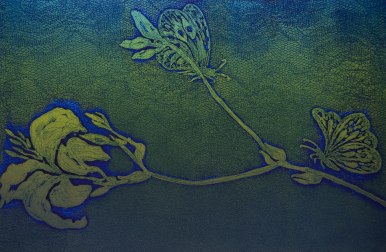

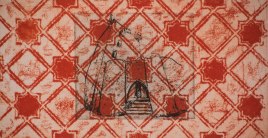

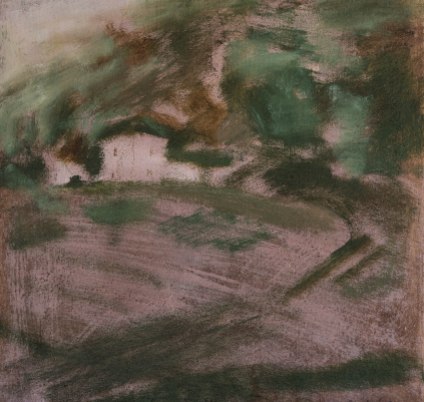


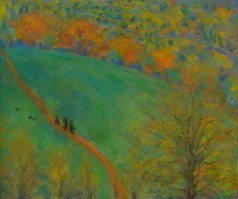














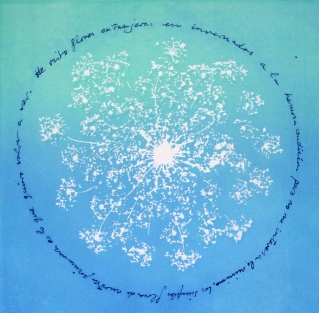










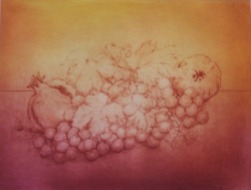
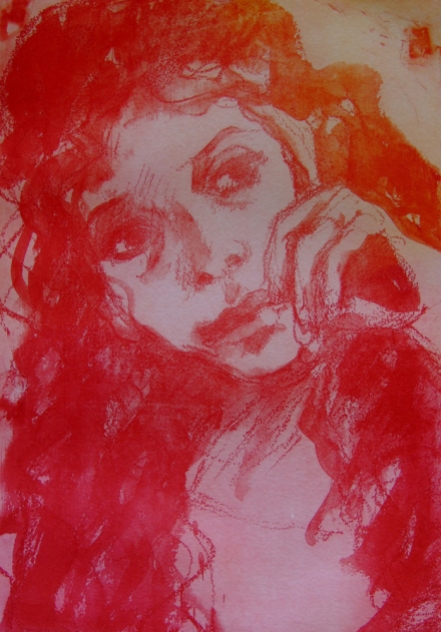




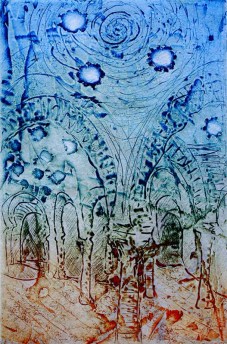




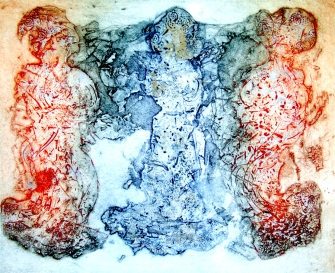
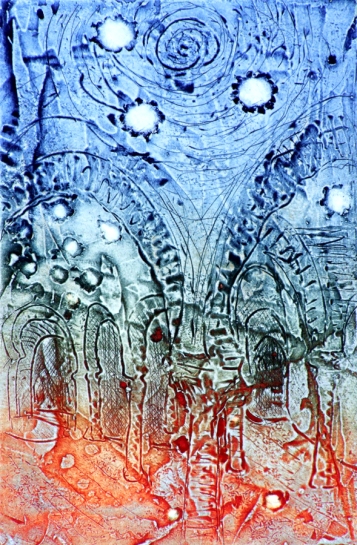






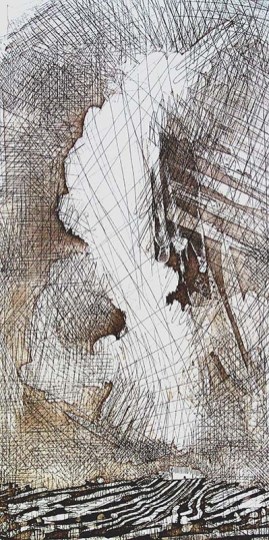








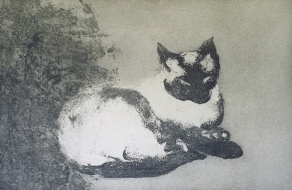

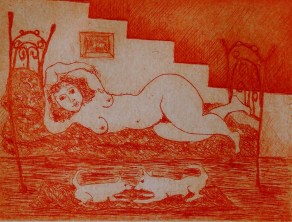


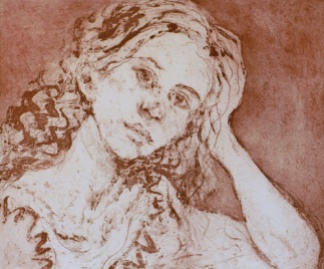
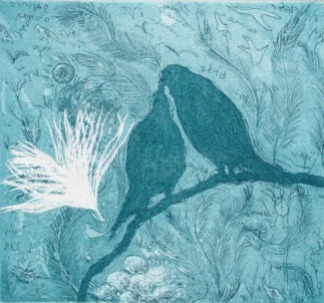

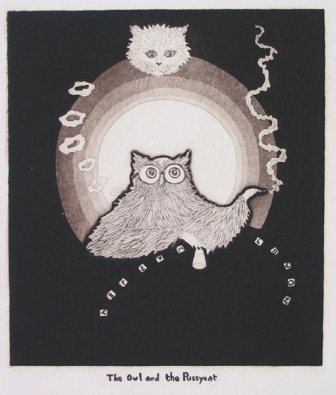



















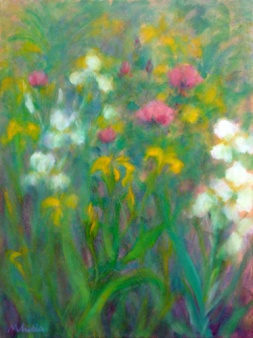







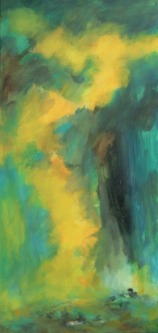



















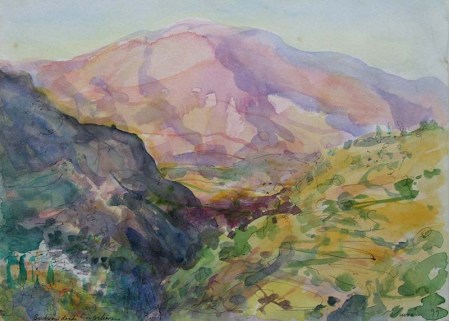
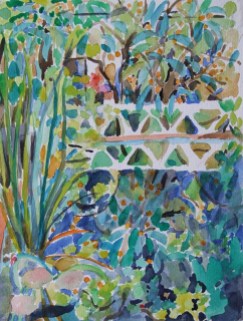



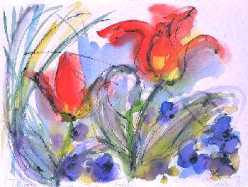



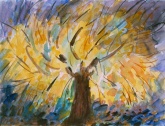




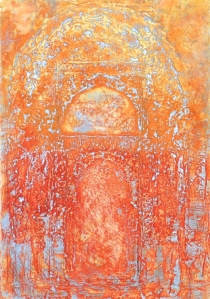









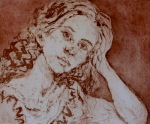


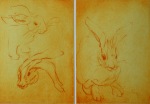





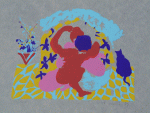
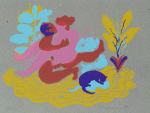


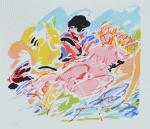

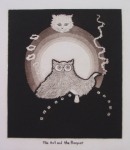













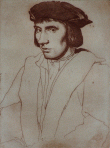
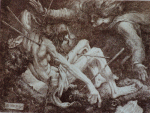






[…] See full interview here. […]
A Print Workshop Central Interviews Sampler « World Printmakers’ Print Workshop Central
August 25, 2008 at 7:56 pm
I am very impressed by this presentation. I have a very similar set up here in Australia called the Griffith Studio and Graphic Workshop. We use traditional techniques however on occasions we have editioned using solar plates. I hope that you work in a well ventilated set up. I have had cancer so I take particular care with mordants etc now.
My web site is http://www.pamelagriffith.com
Pamela Griffith
August 26, 2008 at 11:28 am
Hi,
I live in cadiz area and have set up in my house to printmake for myself.
Your site is lovely, I would love to cme and visit your studio some day.
Deborah.
deborah
December 11, 2008 at 1:00 pm
Hi Deborah,
A long time has passed and you still haven’t paid me a visit. It’s never too late!
All the best for 2011,
Maureen
Mike Booth
January 11, 2011 at 8:34 am
Hey there!
Your press looks great! I plan on doing some research in Portugal in the coming year, and I would love to visit. Do you know of any print studios in Portugal by chance?
Thanks
B.
B.Love
February 27, 2009 at 11:13 pm
Hi,
Very interesting. I am planning a tour through Europe trying to find suppliers. My wife is an artist and one of the stops is Spain. I might surprise her and drop in 🙂
Thx
PB
February 12, 2010 at 11:04 am
[…] Pomegranate Editions on Print Workshop Central […]
The Gallinero Receives Its First Artists « Granada Artist Studio Visits
December 8, 2010 at 2:33 pm
[…] Pomegranate Editions on Print Workshop Central […]
El Gallinero Receives First Artists, Makes for Busy Springtime 2010 « "El Gallinero"–A Tranquil, Evocative Refuge Outside Granada for Artists & Writers
December 8, 2010 at 3:09 pm
[…] Pomegranate Editions on Print Workshop Central […]
It’s Time to Design a Smashing Summer Art Holiday! « Printmaking Courses in Spain
December 8, 2010 at 3:13 pm
[…] The magazine published a one-page abridgment of the story. To see the complete version go to the Pomegranate Editions section of the Print Workshop Central site, and scroll down past all the photos to the fifth article, entitled “Burning Plates and […]
Burnt by the Spanish Sun « Printmaking Courses in Spain
July 15, 2011 at 6:02 pm
[…] Printmaking Master Classes project was to shoot the first five videos and a trailer in Maureen’s Pomegranate Editions studio, located in a village in the foothills of the Sierra Nevada mountains outside of Granada. […]
Printmaking Master Classes Videos to Be Released by September 15 « Printmaking Courses in Spain
August 25, 2011 at 1:04 pm
[…] with Javier Álvarez, the director of the library, they mentioned my own artist’s book, Entredós, Between Two (scroll down towards the bottom) and he decided to add one of those to the permanent […]
Library of Andalusia Acquires Our Artists’ Books | Printmaking Courses in Spain
December 17, 2015 at 2:04 pm
[…] So I made her five, one for her, another for her artists’ apartment, and three more on printmaking themes where she was featured heavily. . So my sweet wife, who had only modest business ambitions, […]
Regrets? Well, Yes and No–2/2 – Trump and All the Rest
February 11, 2019 at 6:29 pm
[…] Would you like to see some of Maureen’s artwork? Here’s a link. […]
The American School In Switzerland – 2020 | Printmaking Courses in Spain
February 28, 2020 at 11:48 pm